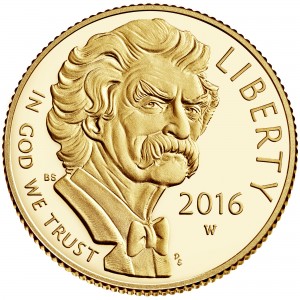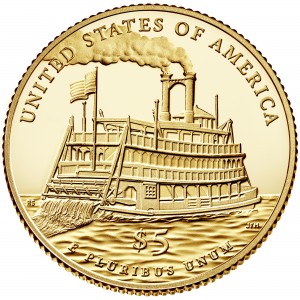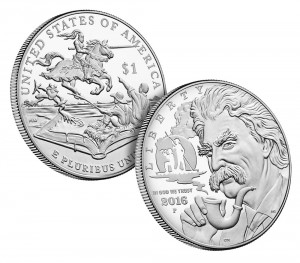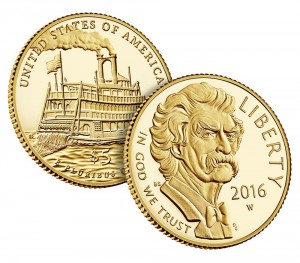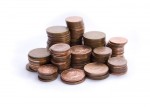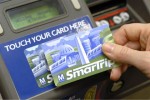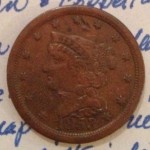Weekly World Numismatic News for April 4, 2021
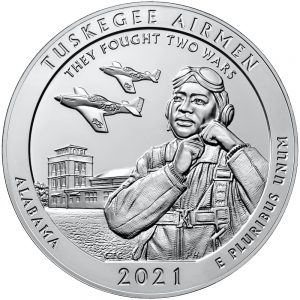 In a few days, the U.S. Mint will release the last of the five-ounce silver America the Beautiful Quarters. The ATB series was a follow-up to the 50 State Quarter Program to honor the nation’s national parks and forests. The order of the program was determined by the date the area became a national park or forest.
In a few days, the U.S. Mint will release the last of the five-ounce silver America the Beautiful Quarters. The ATB series was a follow-up to the 50 State Quarter Program to honor the nation’s national parks and forests. The order of the program was determined by the date the area became a national park or forest.
The Tuskegee Airman National Historic Site in Tuskegee, Alabama, became a registered historic site on November 6, 1998. Formerly Morton Field, the site was the Tuskegee Airmen’s base and training center, the only African-American division of the U.S. Army Air Corps during World War II.
The end of the ATB quarters also ends the corresponding five-ounce hockey puck-sized bullion coin issues. The big coins are popular with investors and some collectors.
Now that the ATB quarters program has ended, a reverse celebrating George Washington’s crossing the Delaware River will replace the reverse for the rest of 2021. In 2022, the quarters will feature prominent women in United States history. The program will last until 2026, when the quarters’ design will celebrate the American Semisesquincentenial (250 years).
And the law that extended the circulating commemorative programs also includes the provisions for the U.S. Mint to create five-ounce silver hockey puck-sized coins from almost any program.
And now the news…
 → Read more at jpost.com
→ Read more at jpost.com
 → Read more at canberraweekly.com.au
→ Read more at canberraweekly.com.au
 → Read more at voanews.com
→ Read more at voanews.com
 → Read more at haaretz.com
→ Read more at haaretz.com
 → Read more at looper.com
→ Read more at looper.com
POLL: What about the Mark Twain commemoratives?
I am not a collector of commemorative coins except for when I am interested in the subject or the coin is intriguing. The last commemorative I purchased was the 2015 March of Dimes Silver Dollar because I loved the reverse design. I bought the 2014 National Baseball Hall of Fame Commemorative Silver Proof dollar and clad half dollar because of the subject and the curved design.
But I am on the fence on the 2016 Mark Twain commemorative coins. Like many people, Adventures of Mark Twain and Adventures of Huckleberry Finn were required reading in school. Aside from his literature, he was a fan of emerging technologies and befriended both Thomas Edison and Nikola Tesla. His novel A Connecticut Yankee in King Arthur’s Court brings his interest into the fantasy of time travel, a very interesting book that does not get the credit it deserves.
Later in life after he encountered financial troubles, he embarked on speaking engagements to earn money. His speeches are very insightful and humorous that are worth reading. Twain published a compilation of his speeches in Mark Twain’s Speeches, which can be found in its entirety online.
Aside being a fan of Twain, of the two coins, I really like the design of the gold coin. You can look at that portrait and imagine him intently listening, as it has been documented he did, ready to provide his sharp and witty wisdom when you stopped. Looking at that portrait, I can only imagine what Twain would have said about his imaged appearing on coins. He would have been very amused!
How do you feel about the Mark Twain commemorative coins? Are you going to buy them? What do you think?
Which of the Mark Twain commemorative coins did/will you buy? (select all that apply)
Total Voters: 37
Proof reading is one way to avoid errors
Originally, both the press release and apparently the COA from the U.S. Mint announced that the reverse design included Jim and Huck from the Adventures of Tom Sawyer. This error seemed to pass a lot of people who read the books, including me. Jim, who was Miss Watson’s slave who befriended Huckleberry Finn, appeared in the Adventures of Huckleberry Finn. Oops!
Apparently, someone forgot to proof read everything and the COAs were printed with the same information. Rather than distribute the wrong COA, which would have been interesting, the U.S. Mint had them reprinted. Citing an inventory issue, they delayed the sale of the silver dollar. It was not the inventory of coins that was the problem. It was the inventory of the complete package including the COA that caused the delay.
Packaging errors usually do not bring a premium. While they can be amusing, collectors have treated packaging errors as a nuisance. This would have been a fun error to keep around.
As an aside, I noticed that the 2016-W Mark Twain $5 Gold Proof Coin is listed as “Currently Unavailable” on the U.S. Mint’s website. The uncirculated coin is still available. Although there is a mintage limit of 100,000 gold coins regardless of strike type, there is no indication if this is the result of a sell out or a lack of inventory. Stay tuned.
Powerball and my numismatic fantasy
 As I write this the current estimated jackpot for Powerball on Wednesday, January 13, 2016 is $1.4 billion. It is the largest lottery jackpot in history.
As I write this the current estimated jackpot for Powerball on Wednesday, January 13, 2016 is $1.4 billion. It is the largest lottery jackpot in history.
If you win the jackpot and elect to be paid out over 30 years, you will receive $46,666,666.66 per year, less taxes.
The cash-out option, where you take all of the cash up front, is estimated to be “only” $868 million, less taxes.
As for the taxes, the lottery takes 25-percent off the top but you will still be required to pay the federal rate of 39.6-percent and your state tax. In places like New York City there is also a city tax. While I love New York, I would move before collecting the prize!
If you were wondering, the best place to move because of the taxes would be to California. California does not tax lottery winnings. But you will be subject to the federal income taxes at the highest rates.
For discussion, let’s imagine that you won and decided on the cash-out option. If you consider your state tax is the average of 7-percent, you will be left with $747.6 million. After you pay the bills, buy the new dream home, cars, vacations, etc., most of my readers should consider what you are going to do with your numismatic collection. You can build a great collection or purchase just about any coin with what is left.
What is your numismatic fantasy?
If I win Powerball, I will put up a $15 million reward for the owner of a surviving 1964-D Peace dollar to sell this special coin to me. The coin must be able to be certified as legitimate by experts in a manner that the Walton Liberty Head Nickel was certified. The reward will be paid only if the coin can be certified.
Why did I choose $15 million? Because I wanted to ensure that it was the most expensive coin on record. For a coin this special and this unique, it should be an appropriate price.
You know mine, what is yours?
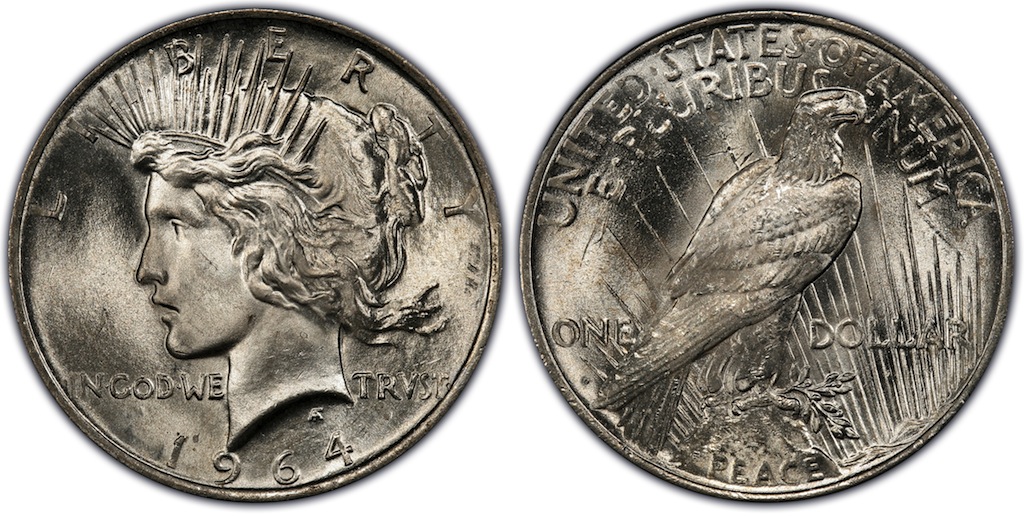
PCGS is offering a $10,000 reward to verify a genuine 1964-D Peace dollar, the number one coin on the new PCGS Top 100 Modern U.S. Coins list. This image is a PCGS artist’s conception of a 1964-D Peace dollar.
Fantasy image of the 1964-D Peace dollar courtesy of PCGS.
Can the U.S. go cashless?
Not necessarily the end of money but the end of physical currency.
With all the talk about ending the production of low value coins, whether it is the one-cent coin here in the United States, or the one or two pence coins in Great Britain, there seems to be movement to reduce the dependence of coinage.
Amongst the examples cited by those looking to make these changes are Canada, who ended the production of their one-cent coin in 2012, and Sweden, where physical currency makes up 3-percent of the economy.
Sweden is an interesting example that may not apply to the United States. The country that introduced the first banknotes to Europe in 1661 has transformed itself into a larger digital economy. Many shops and most banks have stopped handling cash. In areas that were traditional cash-related transactions, there has been a ticket or electronic system in installed. Busses require pre-paid tickets. Other mass transit relies on credit cards or pre-paid debit cards like the Metrocard in New York or the SmartTrip Card in Washington. These cards are less expensive to produce than paper tickets or tokens.But could a cashless society work in the United States?
A key measure of the power of an economy is the Gross Domestic Product, the total cost of goods and services produced by the economy. As of 2012, the most recent statistics available, Sweden’s GDP is $184.8 billion (converted to US dollar equivalent) versus $1.56 trillion for the United States—eight times the Swedish economy. Sweden’s economy ranks 28th and the U.S. 2nd only behind the combined European Union.
For the record, China’s 2012 GDP, third on the list, was $8.36 trillion, just over half of the U.S. GDP.
The United States makes more money, spends more money, trades more money, and has more economic impact than any other country in the world.
The first problem with trying to replicate what Sweden is doing is one of scale. The United States has the single largest economy in the world. While the European Union has a larger GDP, it is made up of cooperating countries with their own sovereign interests. While some might say that it is the same as the 50 states, the federal structure of a single republic versus several cooperating republics of Europe makes like the equivalent of swallowing the ocean in one gulp versus several gulps controlled by cooperating governments in Europe. Even when European governments do not cooperate, they can individually work better than what has been going on in the United States.
Another key indicator is the poverty rate. It is important to consider those in poverty because they usually do not have the resources to participate in the advanced structures of society. People living in poverty do not have access to credit regardless of where they live, even if they do have some access to the technologies that support cashless access. Although companies are giving away smartphones in many poverty stricken areas, those customers continue to have problems paying their bills. These are the people who rely on cash.
What may account for Sweden’s low use of cash is their low percentage of its citizens in poverty. With a poverty rate of 3.97-percent, this may account for the 3-percent average currency usage. Poverty in the United States is 5-times more than Sweden at 20.59-percent. While this in itself may not be a definitive indicator, it could explain why there is a vocal opposition of anti-poverty groups when discussion turn to eliminating the cent or a cashless society.
Those who preach a cashless society and point to Sweden also fails to consider one factor that only few countries have faces: the United States has probably one of the most diverse populations. Current politics notwithstanding, the United States has historically been more open to immigration than most other nations. Sweden, while a wonderful place, has a lesser and more homogenous population. Swedes are rightfully proud of themselves, their heritage, and history and has a culture more conducive to working together.
When was the last time that we saw the United States all together? Even after the attacks of September 11, 2001, there were segments of the population that has called it a hoax and said that the government bombed itself to press an agenda.
Even those who want to end production of the one-cent coins and uses the end of the half-cent as an example of the U.S. ending production of a no longer needed low denomination coin gets the reasons wrong for the reasons why its production was ended. Those who know better reminds them of the reasons and many stammer in shame before puffing out their chests and saying they are right, anyway.In 2015, the U.S. Mint and Bureau of Engraving and Printing produced more coins and currency than ever. Both government agencies produce their main products because it was ordered by the Federal Reserve, the central banking organization of the United States. Even though paper currency may be exported, most coins are circulated in the United States for domestic use.
If there is any indication that the United States is moving to a cashless society, then why is currency production at its highest in history?
Interestingly, 2015 was the 50th Anniversary of clad, non-silver coinage except for the half-dollar that was produced with 40-percent silver until 1969. To this day there are people to decry the use of fiat money.
Regardless of what pundits say, the United States economy is more broad, diverse, and not as easy to control as in Sweden. If the United States ever gets to the point where it can support a cashless society, it might not be during the lifetime of anyone reading this today. These pundits do not see beyond their caramel macchiatos to understand the Real World.
Keep collecting this coins. Your great grandchildren may enjoy them but their grandchildren may find them interesting curiosities.
- Stacks of 1p and 2p coins courtesy of LoveMoney.com
- Smartrip Card image courtesy of Arlington Transportation Partners.
December 2015 Numismatic Legislation
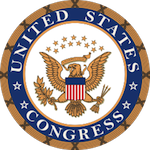 Congress ended the calendar year with a proverbial bang. Aside from actually passing a budget, they passed a comprehensive transportation bill that not only has the possibility of raising our infrastructure grade from a D– to a D (hey… it’s an improvement), but in a few short words will have a big impact on the U.S. Mint.
Congress ended the calendar year with a proverbial bang. Aside from actually passing a budget, they passed a comprehensive transportation bill that not only has the possibility of raising our infrastructure grade from a D– to a D (hey… it’s an improvement), but in a few short words will have a big impact on the U.S. Mint.
H.R. 22: Fixing America’s Surface Transportation Act
Read the details of this law at https://www.govtrack.us/congress/bills/114/hr22
If you want to read my analysis of the impact to the U.S. Mint from this law, see the following four-part series:

